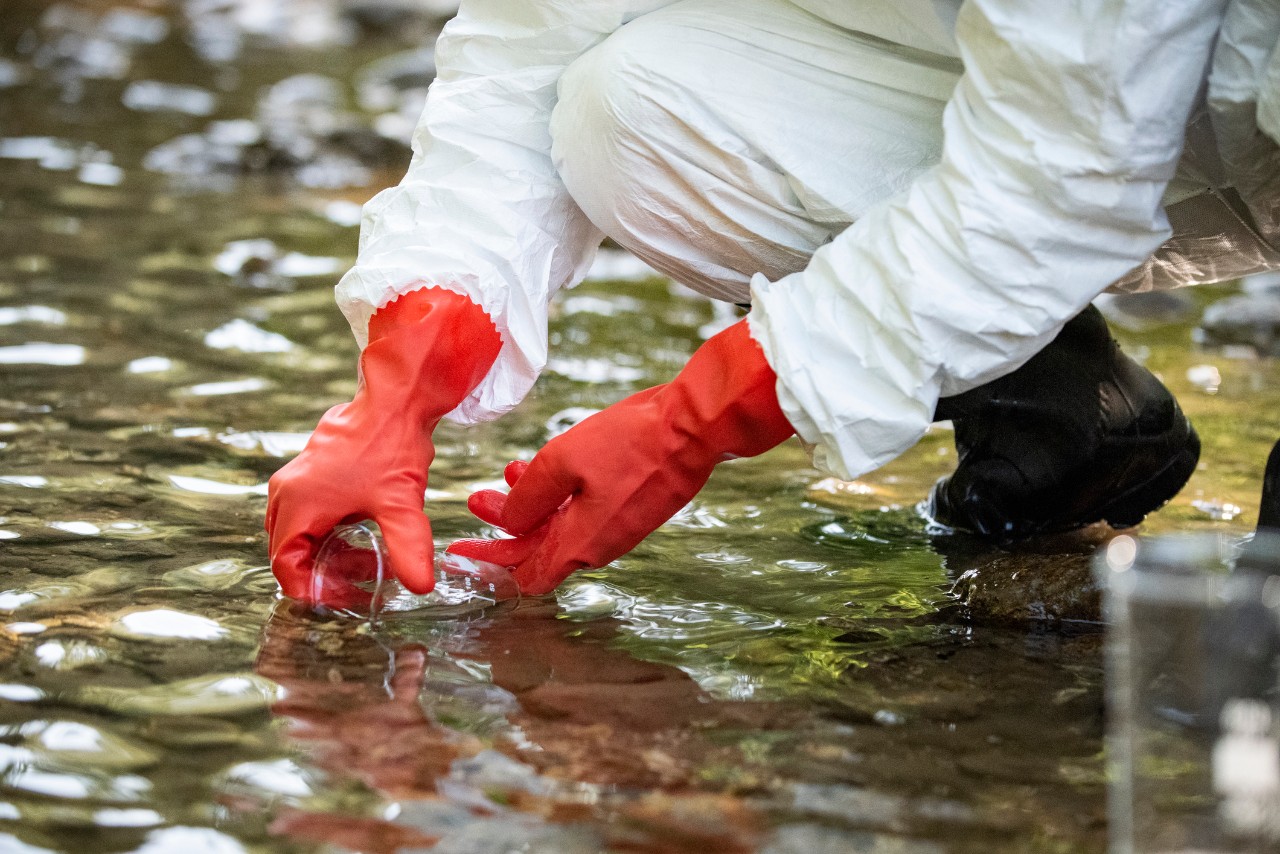
Cincinnati.com: Forever chemicals in Ohio's drinking water: Why Cincinnati is better off than Indian Hill
UC expert talks about the health threats from PFAS
New data from the U.S. Environmental Protection Agency shows that industrial pollutants, known as forever chemicals, which are linked to cancer and other serious ailments, are rarely detected in samples of drinking water from Cincinnati and most nearby communities.
The chemicals turn up in drinking water all over Greater Cincinnati, but how many toxins – and how much of them – flow from your tap depends on where you live. Cincinnati.com posted a story on PFAS, reporting that in Northern Kentucky and Colerain and Springfield townships, trace amounts are sometimes found at levels exceeding the EPA's minimum reporting limits.
Water districts that serve Indian Hill, Terrace Park and Loveland found the largest amount of forever chemicals in the area, with some samples measuring three to four times the reporting limits. In the Cincinnati.com article one of the experts cited was Susan Pinney, PhD, of the Department of Environmental and Public Health Sciences at the UC College of Medicine.

Susan Pinney, PhD, of the Department of Environmental and Public Health Sciences/Photo/Colleen Kelley/UC Marketing + Brand
Pinney said the half-life of PFAS compounds — the amount of time it takes the chemicals to lose half their toxicity — is about four years in the human body.
Because they take so long to break down in the body and in the environment, the amount of toxicity can build up in people who are regularly exposed to the compounds, which is why they are called “forever chemicals.”
Overhauling water treatment systems is an expensive process which poses challenges for some communities which can't afford to make the needed changes.
Every solution comes with costs, said Pinney. But she said the tougher regulations are necessary. She recently led a study that linked one PFAS compound to delays in the physical development of girls.
"As we continue to do research," she said, "we find there are health effects at lower and lower levels."
Pinney also discussed this topic as a guest on Cincinnati Edition on WVXU. Hear that interview here.
Read more about Pinney's research on how PFAS can delay puberty in girls here.
Featured image at top: vitranc/iStock
Next Lives Here
The University of Cincinnati is classified as a Research 1 institution by the Carnegie Commission and is ranked in the National Science Foundation's Top-35 public research universities. UC's graduate students and faculty investigate problems and innovate solutions with real-world impact. Next Lives Here.
Related Stories
2021 University Recognition Ceremony honors student achievements
April 13, 2021
The University of Cincinnati recognizes students each year who have made significant service, leadership, and academic contributions to the UC community. These students exemplify the spirit of what it means to be a Bearcat.
UC Day of Giving a success
April 28, 2021
University of Cincinnati Day of Giving’s 24-hour challenge was a tremendous success this year, raising $2,219,197 with 3,232 gifts. The fourth annual UC Day of Giving raised its most money to date with alumni, donors, students, faculty and staff joining together to support UC and UC Health.
President picks exceptional talent
April 28, 2021
The University of Cincinnati 2021 Presidential Leadership Medal of Excellence Awards honor six undergraduate scholars for scholarship, leadership, character, service and the ideals of the university. Awardees are spotlighted for exceptional academics, creativity, community service and innovation.
Grad students earn president's highest honor
April 28, 2021
The University of Cincinnati 2021 Presidential Medal of Graduate Student Excellence Awards honor three graduate scholars for scholarship, leadership, character, service and the ideals of the university. Awardees are spotlighted for exceptional academics, creativity, community service and innovation.
GIVEHOPE and BSI Engineering Celebrate Ten Years of Driving Research
August 3, 2021
Years after two personal losses from pancreatic cancer, Cincinnati-based nonprofit GIVEHOPE and consulting firm BSI Engineering are celebrating a philanthropic partnership that has funded 13 pilot research projects at the University of Cincinnati Cancer Center.
Finding community and building a future
July 9, 2021
As a University of Cincinnati College of Medicine student, Sarah Appeadu, MD, ’21, remembers journaling on the “3 Cs” that got her through medical school: Community, community, community. Now, when she lists the people who supported her through four years of training—the last year in a global pandemic—it keeps growing: her family, her church, her classmates, and the college’s Office of Student Affairs and Office of Diversity, Equity and Inclusion. “I look back and it was such a crucial time to really be nurtured in that way,” she says. “I’m so thankful that I had those people. It shows being around the right people really mattered. That’s my same hope for residency even.”
UC to honor 2,079 grads at summer Commencement
August 2, 2021
UC celebrates the 2021 summer Commencement on Friday in two ceremonies at Fifth Third Arena. On Saturday, UC will recognize 2020 grads with an in-person Commencement celebration.
New York Times: Flint Weighs Scope of Harm to Children Caused by Lead in Water
February 1, 2016
Kim Dietrich, a professor of environmental health at UC's College of Medicine, is quoted in this story on the medical problems that could develop among the thousands of young children exposed to lead-contaminated water in Flint, Mich.
Cancer-Causing Gene Found in Plasma May Help Predict Outcomes for Patients
February 18, 2016
Researchers at the University of Cincinnati have discovered that a human cancer-causing gene, called DEK, can be detected in the plasma of head and neck cancer patients.
UC Receives $1.9 Million to Study Pain
February 15, 2016
Jun-Ming Zhang, MD, of the UC College of Medicine, is the principal investigator of a $1.95 million grant to study the interacting roles of the sympathetic and sensory nervous and immune systems in back and neuropathic pain models.
